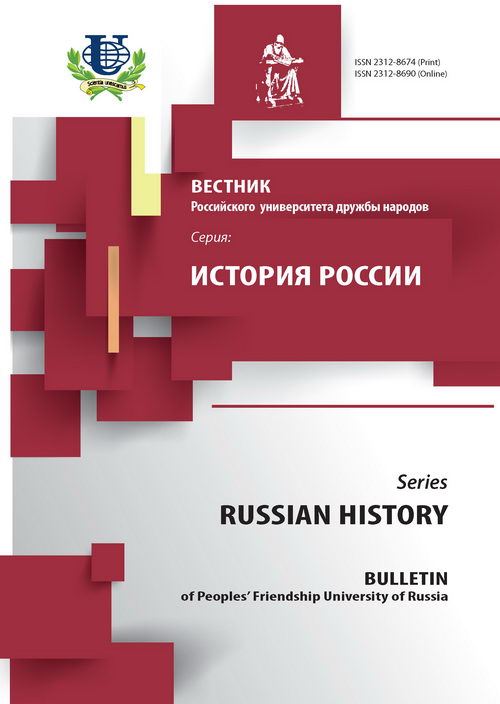TURKESTAN MUSLIMS’ “HOLY PLACES” AS CENTRES OF ANTIRUSSIAN ACTIVITIES OF TURKISH SECRET SERVICE (SECOND HALF OF 19TH - EARLY 20TH CENTURIES)
- Authors: Litvinov V.P.1
-
Affiliations:
- Elets State University named after I.A. Bunin
- Issue: Vol 15, No 2 (2016)
- Pages: 55-65
- Section: ARTICLES
- URL: https://journals.rudn.ru/russian-history/article/view/13563
Cite item
Full text / tables, figures
Abstract
The article deals with one of the aspects of the history of the Russian-Turkish relations in the period under consideration. The evidence suggests there was a high level of tension in the Russian-Turkish relations throughout its development. They often escalated into open military conflicts. The Russian penetration into Turkestan in the second half of the 19th century angered the Ottoman Empire’s ruling circles and forced them to send their agents to the Caspian region. Russia’s annexation of Central Asia by the 1860-1870s strengthened Turkey’s anti-Russian policy. As a result, the number of Turkish agents increased in Russian Turkestan. The Ottoman Empire’s intelligence service actively used the “holy places” of Islam in Turkestan as the centres of the largest concentration of Muslims of the region with the view of anti-Russian propaganda. Virtually all anti-Russian uprisings in the region began at the graves of Islamic "righteous." Despite serious countermeasures the tsarist authorities did not manage to eradicate the Turkish agents from the state and political life of the region and completely destroy all its subversive activities.
About the authors
Vladimir Petrovich Litvinov
Elets State University named after I.A. Bunin
Email: vladlenli@yandex.ru
Department of Historical and Cultural Heritage
References
















